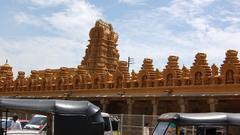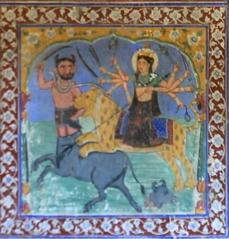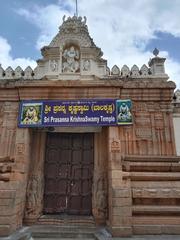Mysore Zoo Visiting Hours, Tickets, and Detailed Visitor Guide to Sri Chamarajendra Zoological Gardens
Date: 04/07/2025
Introduction
Nestled in the heart of Mysore, the Sri Chamarajendra Zoological Gardens—popularly known as Mysore Zoo—stands as one of India’s oldest and most esteemed zoological parks. Established in 1892 by Maharaja Chamarajendra Wodeyar X, the zoo reflects a rich legacy of wildlife conservation, education, and cultural heritage. Conveniently located near prominent landmarks such as Mysore Palace and Chamundi Hill, Mysore Zoo offers visitors an immersive experience blending natural beauty with historical significance (mysuruzoo.info).
Spanning over 150 acres and home to more than 1,450 animals from 168 species across 25+ countries, Mysore Zoo is celebrated for its pioneering breeding programs—especially for endangered species like white tigers and Indian elephants. With thoughtfully designed, naturalistic enclosures and lush gardens created by German horticulturist G.H. Krumbiegel, the zoo provides a welcoming environment for both animals and visitors.
This in-depth guide covers Mysore Zoo visiting hours, ticket prices, how to reach the zoo, must-see attractions, amenities, conservation efforts, and practical tips for a memorable visit. Official sources for the latest visitor updates include the Mysore Zoo website and Karnataka tourism portals (mytravaly.com).
Table of Contents
- Introduction
- Mysore Zoo Visiting Hours and Tickets
- Location and How to Reach
- Historical Overview
- Major Attractions and Animal Collection
- Visitor Facilities and Accessibility
- Educational Programs and Community Engagement
- Visitor Guidelines and Tips
- Nearby Attractions
- Frequently Asked Questions
- Visuals and Interactive Elements
- Summary and Call to Action
- Sources
Mysore Zoo Visiting Hours and Tickets
- Open: Daily, 8:30 AM – 5:30 PM (Last entry at 5:00 PM)
- Closed: Tuesdays (for maintenance)
- Ticket Prices:
- Weekdays: Adults ₹80, Children (5–12 years) ₹40, Children below 5: Free
- Weekends & Govt. Holidays: Adults ₹100, Children (5–12 years) ₹50
- Senior Citizens: ₹40 (weekdays), ₹50 (weekends/holidays)
- Eco-Car (Battery Vehicle): Adults ₹100, Senior Citizens/Children ₹80
- Where to Buy: Tickets are available at the zoo entrance. Online booking is recommended during peak seasons through the official website.
- Group Concessions: Special rates for school and student groups (25+ visitors).
Location and How to Reach
Address:
Sri Chamarajendra Zoological Gardens, Zoo Main Road, Indiranagar Extension, Mysuru, Karnataka 570010, India.
Getting There:
- By Road: Frequent local buses, taxis, and auto-rickshaws connect the zoo to major city points. Ample parking is available (parking fees apply).
- By Rail: Mysore Junction is 3 km away; auto-rickshaws and taxis are easily available.
- By Air: Mysore Airport (15 km); Bangalore International Airport (170 km).
The zoo’s proximity to Mysore Palace and Chamundi Hill allows for a combined sightseeing experience.
Historical Overview
Foundations (1892–1909)
Established as a private menagerie by Maharaja Chamarajendra Wodeyar X in 1892, the zoo began on 10.9 acres, inspired by European and African zoological gardens.
Expansion (1909–1947)
Under the first superintendent, A.C. Hughes, the zoo expanded to 45 acres, introduced innovative enclosure designs, and became officially known as Chamarajendra Zoological Gardens. G.H. Krumbiegel’s landscaping and the addition of an artificial lake enriched its natural beauty.
Modernization (1948–1992)
Post-independence, the zoo moved to public management and expanded further, incorporating Karanji Lake as a bird sanctuary. The Zoo Authority of Karnataka was established in 1979, leading to scientific management and the introduction of the animal adoption scheme.
Contemporary Era (1992–Present)
Celebrating its centenary in 1992, Mysore Zoo upgraded facilities, including a modern animal hospital and reptile enclosures. The zoo gained international recognition for its breeding programs and unique animal collection, becoming a leader in conservation and education.
Major Attractions and Animal Collection
Naturalistic Enclosures & Thematic Zones
The zoo is organized into zones for carnivores, herbivores, primates, reptiles, and birds. Spacious, naturalistic habitats allow animals to display natural behaviors (mytravaly.com).
Highlights
- Big Cats: Bengal & White Tigers, African Lions, Leopards, Jaguars, Cheetahs
- Elephants: Asian and African elephants with active breeding and rescue programs
- Primates: Chimpanzees, Baboons, Langurs, Macaques
- Birds: Walk-through aviary, peafowls, hornbills, macaws, ostriches, flamingos
- Reptiles: King Cobras, Indian Pythons, Crocodiles, Monitor Lizards
- Herbivores: Giraffes, Zebras, Hippos, Deer, Antelopes
- Butterfly Park: A garden with native and exotic butterflies
- Nocturnal House: Specially lit exhibits for owls, bats, and civets
Conservation Initiatives
Mysore Zoo is renowned for breeding endangered species, notably the Asian elephant and lion-tailed macaque, and participates in international animal exchange programs.
Visitor Facilities and Accessibility
- Guided Tours: Available for groups and individuals; inquire at the entrance or book in advance.
- Battery-Operated Vehicles: Eco-friendly transport for senior citizens and visitors with mobility needs.
- Restrooms & Drinking Water: Clean facilities throughout the zoo.
- Play Areas: Dedicated children’s zones and interactive displays.
- Souvenir Shops & Cafeterias: On-site for refreshments and memorabilia.
- First Aid: Stations are available, and emergency contacts are displayed.
The zoo is wheelchair-friendly, with accessible pathways and ramps.
Educational Programs and Community Engagement
The zoo conducts educational activities, including workshops, guided walks, painting and essay competitions, and wildlife awareness programs. It maintains a reference library and publishes stud books for research (explorebees.com).
Visitor Guidelines and Tips
- Arrival: Early morning or late afternoon offers the best wildlife sightings and pleasant weather.
- Dress: Wear comfortable, weather-appropriate clothing; bring hats and sunscreen.
- Carry: Water bottles (food is not allowed inside), camera (charges may apply for professional equipment).
- Rules: Do not feed or disturb animals; maintain quiet near enclosures; dispose of litter responsibly.
- Duration: Plan 3–4 hours to explore the zoo thoroughly.
- Restrictions: No outside food, plastic bags, or pets allowed.
Nearby Attractions
- Mysore Palace: 1–1.5 km away; a stunning Indo-Saracenic marvel.
- Karanji Lake: Adjacent to the zoo; ideal for birdwatching and boating.
- Chamundi Hill Temple: Spiritual landmark with panoramic city views.
- Regional Museum of Natural History: Educational exhibits on biodiversity.
- Karanji Mansion: Heritage architecture nearby.
Frequently Asked Questions (FAQs)
Q: What are the Mysore Zoo visiting hours?
A: 8:30 AM to 5:30 PM daily, closed on Tuesdays.
Q: How do I buy tickets?
A: At the entrance or online via the official website.
Q: Are guided tours available?
A: Yes, for groups and individual visitors.
Q: Is the zoo child-friendly?
A: Absolutely! There are play areas and interactive exhibits for children.
Q: Is the zoo accessible for differently-abled visitors?
A: Yes, wheelchair access and eco-friendly vehicles are available.
Q: Can I bring food inside?
A: No, outside food is restricted to protect animal health.
Q: Is photography allowed?
A: Yes, but avoid flash. Commercial photography requires permission.
Visuals and Interactive Elements
-
Images:
- Mysore Zoo entrance with the bust of Maharaja Chamarajendra Wodeyar
- Lion-Tailed Macaque in a naturalistic enclosure
- Scenic view of Karanji Lake within zoo grounds
-
Alt tags:
- “Mysore Zoo entrance with founder’s bust”
- “Lion-Tailed Macaque at Mysore Zoo”
- “Karanji Lake Mysore Zoo scenic view”
-
Virtual Tour: For interactive maps and a virtual walkthrough, visit the official Mysore Zoo website.
Summary and Call to Action
Mysore Zoo harmonizes wildlife conservation, education, and cultural heritage, making it a must-visit destination for families, tourists, and wildlife enthusiasts. Its well-maintained enclosures, diverse species, educational outreach, and accessibility set it apart among India’s leading zoos. Proximity to Mysore’s iconic historical sites adds depth to your experience, allowing for a seamless blend of nature and culture.
Plan your visit today:
- Check Mysore Zoo visiting hours and purchase tickets in advance
- Download the Audiala app for real-time updates, audio guides, and special event notifications
- Follow Mysore Zoo on social media for the latest news and conservation stories
Sources
- Mysore Zoo Official Website
- Mysore Zoo Guide and Timings – MyTravaly
- Attractions and Animal Collection – MyTravaly
- ExploreBees – Mysore Zoo
- Mysore Zoo Virtual Tour and Tickets – IndiaOngo




